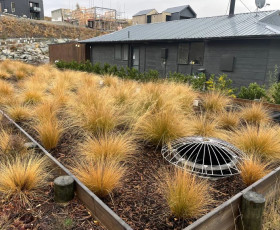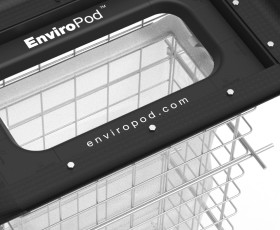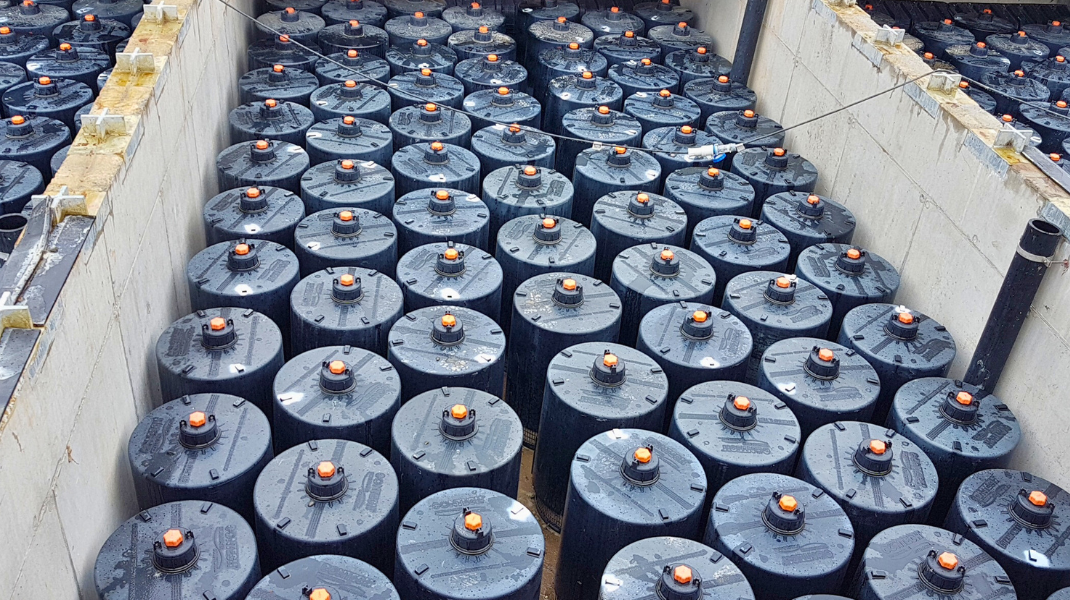This patented technology is employed by the Stormwater Management StormFilter™ in order to prevent surface blinding, ensure use of all media, and prolong cartridge life. In principal, the system siphons stormwater runoff through its cartridge.
First, stormwater enters a StormFilter cartridge, percolates horizontally through the cartridge’s filter media and collects in the center tube where the float valve is in a closed (downward) position. As water passes through the filter media and into the cartridge’s center tube, the air in the cartridge is displaced by the water and purged from beneath the filter hood through the one-way check valve located in the cap.
Once the center tube is filled with water, there is enough buoyant force to open the float valve and allow the treated water in the center tube to flow into the under-drain manifold. This causes the check valve to close, initiating a siphon that draws polluted water throughout the full surface area and volume of the filter. Thus, the entire filter cartridge is used to filter water throughout the duration of the storm, regardless of the water surface elevation in the unit.
This siphon continues until the water surface elevation drops to the elevation of the hood’s scrubbing regulators, and the float returns to a closed position. Utilizing the hydraulic potential in the cartridge, the scrubbing regulators cause the filter surface to be clean of attached sediments thus extending the filter’s operational life.















